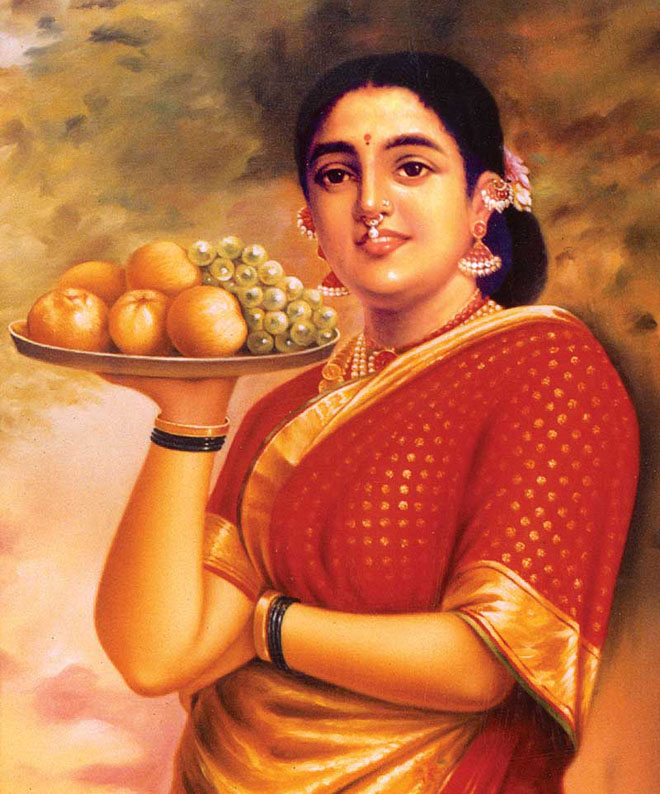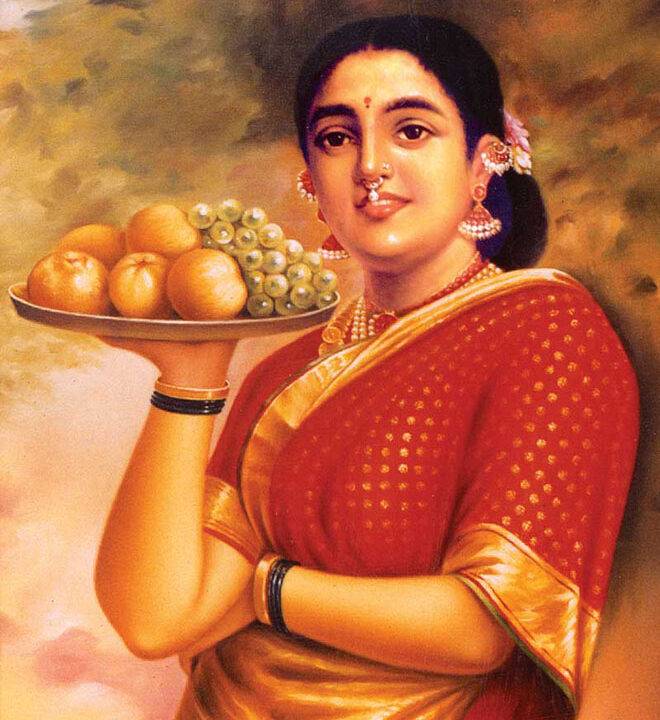The rich tapestry of Indian art unveils a saga that spans epochs, crafting a mesmerizing narrative of creativity, cultural amalgamation, and artistic innovation. From the primal strokes etched in the caves of Bhimbetka to the intricately detailed miniature paintings of the Mughal era, Indian art has evolved as a testament to the country’s historical, religious, and social evolution.

Ancient Beginnings: Bhimbetka and the Mesolithic Era
The genesis of Indian art lies in the labyrinthine caves of Bhimbetka, Madhya Pradesh. These ancient rock shelters bear the silent testimony of humanity’s earliest artistic expressions, dating back to the Mesolithic period. The vibrant cave paintings depict an array of motifs—animals, hunting scenes, and the quotidian life of our ancestors. These primal strokes laid the foundation for a legacy that endured through millennia.
Mauryan Marvels: Pioneering Stone Sculptures
The illustrious Mauryan period (322 BCE – 185 BCE) marked a significant shift in artistic expression. Stone emerged as a prominent medium for artistic creation. The hallmark of Mauryan art was the sculpting of colossal structures and monolithic pillars, notably exemplified by the Great Stupa of Sanchi. These stone marvels encapsulated the essence of the period’s architectural prowess and cultural zenith.
Gupta Golden Age: Flourishing Classical Style
The Gupta dynasty (320 CE – 550 CE) is often hailed as the golden age of Indian art. It was during this period that the classical style of Indian art flourished. The Ajanta and Ellora caves stand as epitomes of this classical artistry, adorned with breathtaking murals and sculptures that narrate tales of mythological sagas and spiritual transcendence. The Gupta era cultivated an aesthetic that blended finesse with spiritual profundity, leaving an indelible mark on the artistic heritage of India.
Medieval Marvels: Islamic Influences and Beyond
The medieval epoch ushered in a confluence of artistic styles with the advent of Islamic rule in India. Islamic art left an indelible imprint on Indian soil, infusing geometric patterns, intricate calligraphy, and architectural grandeur. The resplendent architecture of the Qutub Minar and the celestial beauty of the Taj Mahal epitomize this amalgamation of cultural influences.
Mughal Magnificence: The Era of Miniature Paintings
The Mughal period (1526 CE – 1857 CE) witnessed an artistic renaissance with the emergence of miniature paintings. These exquisite, finely detailed artworks depicted scenes of courtly life, portraits, and mythical narratives with unparalleled finesse. The luminous hues and meticulous detailing showcased the artistic prowess of the era, immortalizing stories in miniature marvels.
Continuity and Contemporary Expression
The legacy of Indian art continues to thrive, seamlessly blending tradition with contemporary expressions. From the vibrant folk art forms like Madhubani and Warli to the avant-garde modern art movements, Indian artists embrace a spectrum of styles, mediums, and narratives. The artistic landscape echoes the diverse cultural ethos, societal transitions, and global influences, reflecting a continuum of creativity and innovation.
Conclusion: A Tapestry of Timeless Creativity
The evolution of Indian art spans millennia, mirroring the ebb and flow of history, culture, and societal evolution. Each epoch has bestowed upon the world a unique legacy—be it the primal strokes in Bhimbetka, the grandeur of Mauryan sculptures, the finesse of Gupta murals, the fusion of Islamic and indigenous styles, or the intricacy of Mughal miniatures. The continuum of Indian art is a testament to the enduring spirit of creativity, resilience, and cultural vibrancy that resonates across the ages.
The journey of Indian art is not merely a historical excursion but an odyssey that celebrates the essence of human imagination, innovation, and expression. It stands as a perennial source of inspiration, inviting us to immerse ourselves in the myriad hues of creativity that have shaped the very fabric of our cultural heritage.

